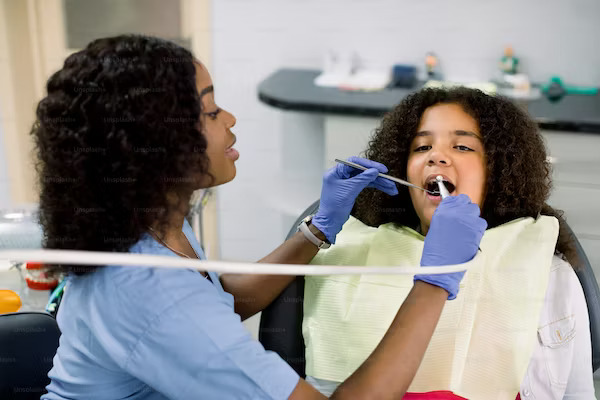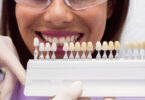Dental health is just as crucial for your children as the health of the rest of their body. Left untreated, cavities and gum infections can even cause complications with the heart, lungs, and other parts of the body.
This is why it’s important to ensure your children see their dentist at least twice per year for a cleaning, X-rays, and examination. As children grow, their dental needs will grow with them, and there are several dental procedures that can be preventative and ensure your kids’ teeth stay healthy as they mature.
1. Dental Cleanings
While these might seem like the easiest or more typical procedure for children, regular dental cleanings and checkups should begin when your child is around 12 months old. By having consistent contact with their dentist, children are more comfortable with the experience, and this helps your dentist determine the early onset of anything that might need to be addressed down the line. Additionally, early dental visits allow the dentist and you to drive home the need for good dental care for your children. Your children need to learn good dental habits, including how to brush and floss their teeth properly. This begins with you educating them on how to do these things and, more importantly, brushing and flossing for them when they’re young to ensure good techniques.
During pediatric dental cleanings, your dentist will typically examine your children’s mouth, gums, and teeth. They will perform a cleaning and discuss good oral hygiene and practices with your children. Typically, they will take X-rays to ensure your children’s teeth are coming in correctly and to rule out any cavities.

2. Dental Sealants
A very common procedure within the field of child dentistry is to have dental sealants applied to their teeth. Typically, these are done to the back teeth and molars. Dental sealants are thin layers of plastic amalgam that are painted onto your children’s teeth. The sealant prevents food, tartar, and plaque from adhering to the molds and crevices in your children’s teeth and helps prevent cavities.
3. Fluoride Rinses and Treatments
Oftentimes, at a children’s dental appointment, your children will swish with a fluoride rinse. Fluoride helps to restore the mineral layers of your children’s teeth and prevents small amounts of decay that can lead to cavities.
4. Cavity Repair
If a small hole forms in the enamel of your children’s teeth, it is what’s known as a cavity. Cavities are one of the most common dental health problems in children. The cavity will continue to expand and cause decay, pain, and even tooth loss if left untreated. In order to repair the cavity and prevent it from worsening, your children’s dentist will need to fill it in:
- The dentist will numb up the area so your children don’t feel pain.
- The cavity is drilled out, and any decayed tooth material is removed.
- The cavity is filled and hardened in order to ensure the cavity doesn’t form again or continue to get bigger.
Luckily, most dentists nowadays are able to offer tooth-colored fillings, so your children don’t have to have silver ones and can maintain a nice, white smile.
5. Dental Extractions
Sometimes, your child’s dentist will find a tooth that needs removal. When this occurs, they will perform a dental extraction. Dental extractions are typically required when a tooth is injured or will cause too much crowding if and when it comes in. To perform the extraction, your dentist will numb everything for your child’s comfort and then remove the tooth from the root.
Tooth extractions are more common than you might expect in children because baby teeth have much thinner enamel. A child’s baby teeth will also ultimately be replaced by their adult teeth, so it’s unlikely that a dentist will recommend procedures like a root canal for them.
6. Dental Crowns
When necessary, your children’s dentist may have to remove a portion of your child’s tooth that is significantly damaged and replace it with a crown. A dental crown allows the base and roots of the affected tooth to remain in the mouth while the infected part is removed and replaced with either stainless steel or porcelain. The replacement portion of the tooth is formed and ground down to match your child’s smile and bite seamlessly. A dental crown is a long-term solution to a tooth that has significant decay or has had several cavities that have gone untreated. Like root canals, dental crowns are much more likely to be recommended for adult teeth.
7. Early (Preventative) Orthodontics
Sometimes, your child’s dentist may recommend orthodontics much earlier than you might have been expecting since it used to be something only teenagers had. However, if your dentist notices extreme overcrowding or a lot of teeth that are coming in crooked, early orthodontia may be the solution to fewer orthodontic needs later in your child’s life. Having the mindset that treating your children’s dental needs before they become a problem is one of the reasons it’s essential to choose a great dentist who will take an interest in your child’s needs, health, and future. If your kid is a pre-schooler, then this is one of the best dental health tips for pre-schoolers.
8. Dental Spacers
If your child has lost a tooth prematurely due to injury or otherwise, the lack of having a tooth in that area can cause problems down the line for your child’s smile. When this occurs, your children’s dentist may opt for space maintainers. These space maintainers hold room in that spot so your child’s other teeth don’t come in at the wrong angles or in the wrong places, and also eliminate overcrowding. Space maintainers are removed once your child’s adult tooth comes into that space.
Overall Dental Health for Your Children
Your children’s oral health is imperative for them to be healthy overall. Poor dental health has been linked to other major health conditions, including diabetes and heart disease, among others. Plus, good oral health means your children will love their healthy and beautiful smiles and won’t experience anxiety about sharing their smiles with the world.
By choosing an excellent pediatric dentist and taking your children to regular visits, you are setting the stage for your children to have healthy teeth and mouths for the rest of their lives. Plus, practice good oral hygiene at home and make sure to monitor their brushing and flossing habits till they’re old enough to take the reigns themselves – they’ll thank you when they’re older!
AUTHOR’S BIO:
Aaron Smith is an LA-based content strategist and consultant in support of STEM firms and medical practices. He covers industry developments and helps companies connect with clients. In his free time, Aaron enjoys swimming, swing dancing, and sci-fi novels. He also writes on child dentistry.








